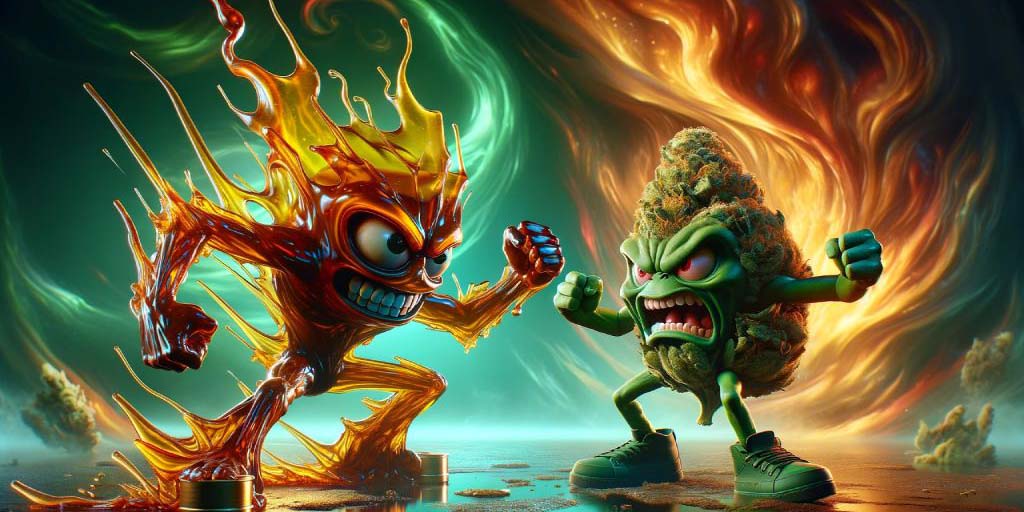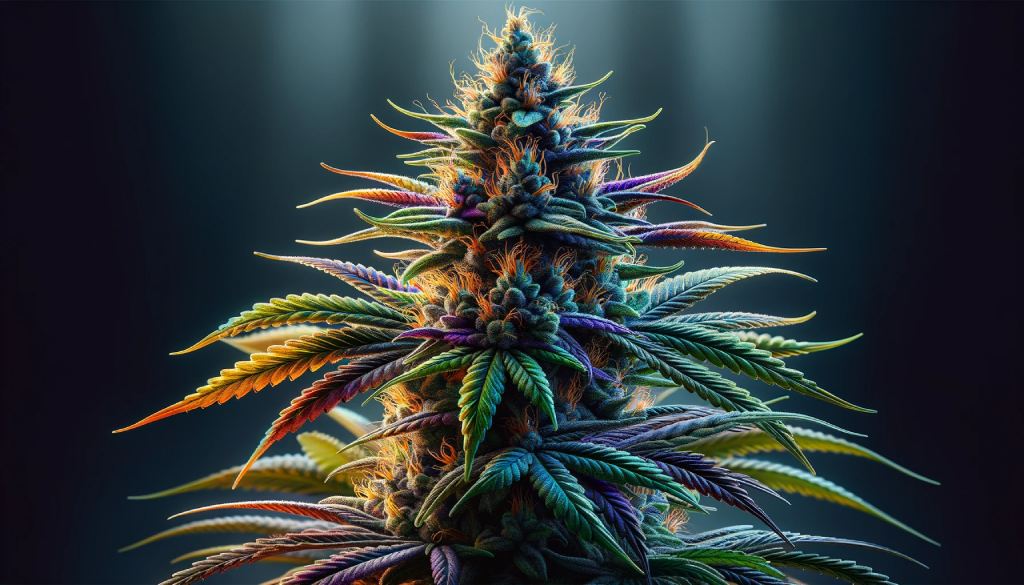
Nowadays, you often hear about various new concentrated forms of cannabis. But is a high THC percentage all that matters to get incredibly high or to experience the health benefits of weed? Read on and learn about terpenes, flavonoids, and the importance of the entourage effect!
Is the Entourage Effect Underestimated?
In the cannabis world, people often hunt for the strongest weed with the highest THC. However, recent research indicates that high percentages of THC are just one part of how effects are experienced. In other words, more is not necessarily better.
In this blog, we answer the question; is an astonishingly high THC percentage or the full spectrum of cannabinoids, terpenes, and flavonoids better? The result is not only interesting for seasoned stoners, but also for users of medicinal forms of cannabis rich in CBD.
What is the Difference Between Isolate, Full, and Broad-Spectrum Cannabis?
To get everyone on the same page, let's explain a few things:
- Full-spectrum: With a full-spectrum extract, you retain all the natural substances found in the cannabis plant. This means a combination of cannabinoids such as THC and CBD, terpenes, and flavonoids.
- Broad-spectrum: This term is mainly used for CBD products. In broad-spectrum, it refers to a CBD solution that contains almost no THC, but includes various other components of the plant.
- Isolate: An isolate is a single isolated compound. For example, there are isolates that contain only THC or only CBD. The former is not legal anywhere in the world.
What is the Entourage Effect?
The entourage effect is a theory about the synergy of the different components of the cannabis plant. According to this theory, THC, CBD, and other cannabinoids, along with terpenes and flavonoids in cannabis, work together synergistically. This means that the combined effects of these compounds can be greater than their individual effects. For example, while THC is known for its psychoactive properties, the presence of CBD and other compounds can modulate the intensity of these psychoactive effects or provide other therapeutic benefits.
The Role of Terpenes and Flavonoids
Not only cannabinoids such as THC and CBD play an important role, but also terpenes and flavonoids. For instance, terpenes contribute to the taste and smell of cannabis. Each cannabis strain has its own terpene profile, which provides a lot of variety on the coffeeshop menu. Not just the smell and taste, but also the effects vary by strain. For this reason, strains rich in certain terpenes can be more helpful in relaxation and stress relief. Other strains have stimulating effects or can contribute to pain relief.
Entourage = Company
Flavonoids
Flavonoids are substances known mainly for giving flowers and fruits their beautiful colors. In the case of cannabis, think of the beautiful leaves and buds of strains like Purple Haze or Blueberry. Anthocyanins, a group of flavonoids, play a significant role in this. To date, more than 6000 different flavonoids are known. Cannabis contains about 20 different flavonoids, and these 20 flavonoids account for about 10% of all active substances in cannabis.

Measuring = Floating
The Canadian neuroscience organization Zentrela, in collaboration with PAX Labs, conducted a study on the remarkable differences between a substance with various cannabinoids, terpenes, and flavonoids, and a substance without other cannabinoids, terpenes, and flavonoids, i.e., a solution mainly consisting of THC alone.
In this study, 28 candidates were divided between the two different solutions. One was rosin, a full-spectrum extract of cannabis, and the other a THC isolate. Unfortunately, the Dutch-Headshop team was not invited to the study. The results were measured with an EEG device. EEG stands for electroencephalogram. With this device, the electrical activity in the brain is measured using electrodes (conductors attached to the head with a gel).
The Complete Picture
From the study, a number of remarkable results emerged regarding the psychoactive effect in the two test groups. The notable differences in the experience of each test group are:
-
The group that received the full spectrum of cannabinoids, terpenes, and flavonoids experienced a significantly faster response to the psychoactive substances.
-
The group that received the full spectrum of cannabinoids, terpenes, and flavonoids experienced a significantly stronger psychoactive reaction.
After further statistical analysis, it can be said with 90% certainty that there is a trend in faster and stronger effects in the third and fourth minute after inhalation. Fifteen minutes after inhalation, the faster and stronger effect is statistically confirmed.
Conclusion
Although the result of this study clearly points to the added value of all cannabinoids, terpenes, and flavonoids, a definitive conclusion cannot yet be drawn. However, this study points to a complex interplay among all compounds, contributing to the observed increased psychoactive effect. This suggests that THC alone does not solely contribute to the potency of the psychoactive reaction, but that all these compounds together do much more than THC alone.
Our conclusion: don't focus too much and especially vary :-)
Sources
[1] Genetics, A. (2022, 23 februari). Wat zijn flavonoïden in cannabis? | Amsterdam Genetics. Amsterdam Genetics. https://www.amsterdamgenetics.com/nl/wat-zijn-flavonoiden-in-cannabis-2/
[2] CUSICTM Study publication #6 - Zentrela. (2023, 10 oktober). Zentrela. https://zentrela.com/publication/cusic-6/
[3] Russo, E. “Taming THC: potential cannabis synergy and phytocannabinoid-terpenoid entourage effects“ British Journal of Pharmacology. Aug. 2011.